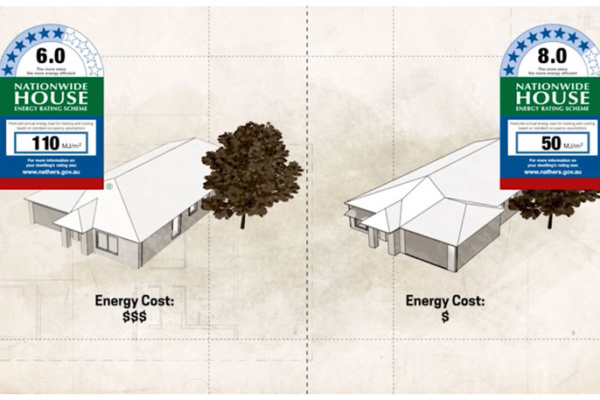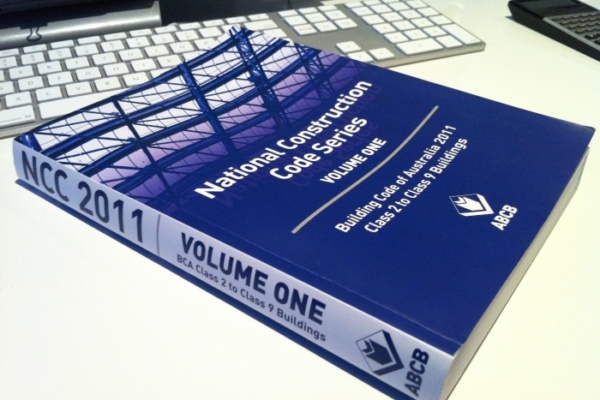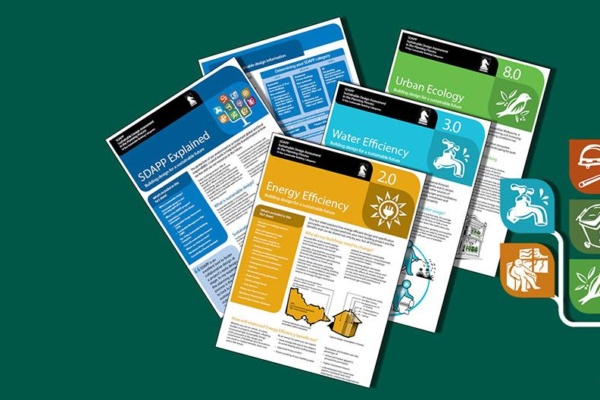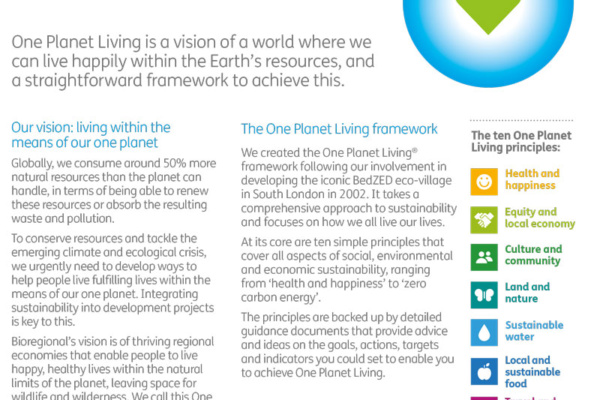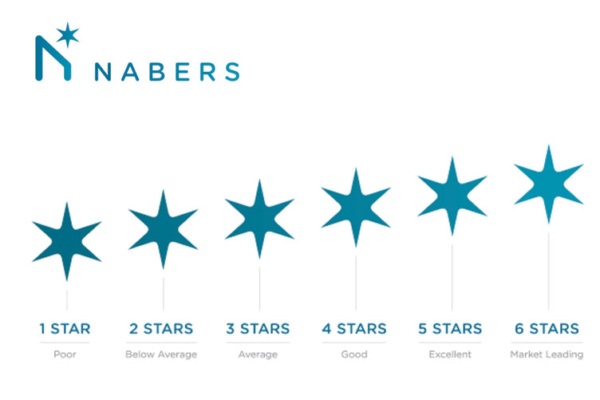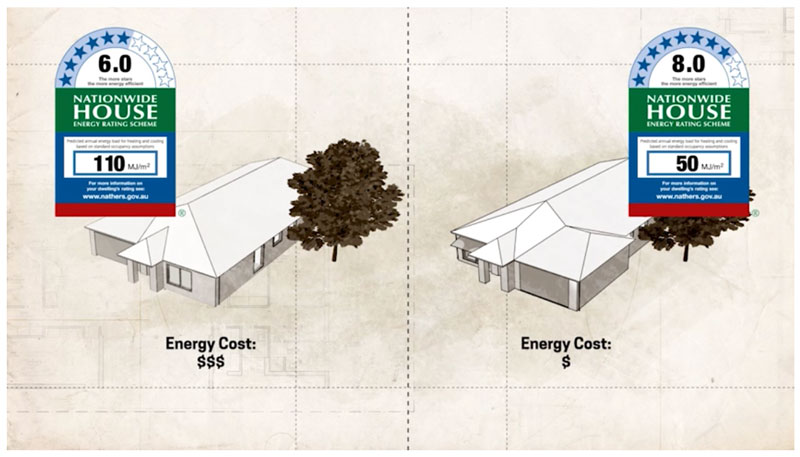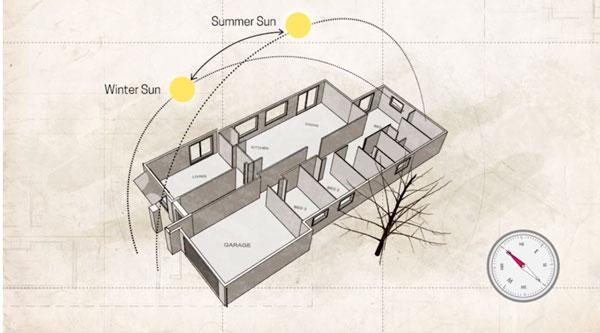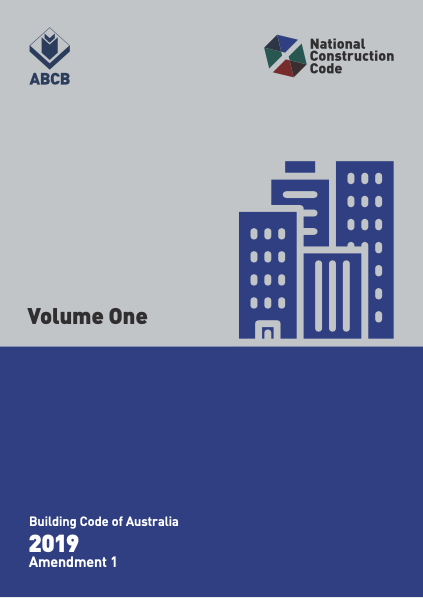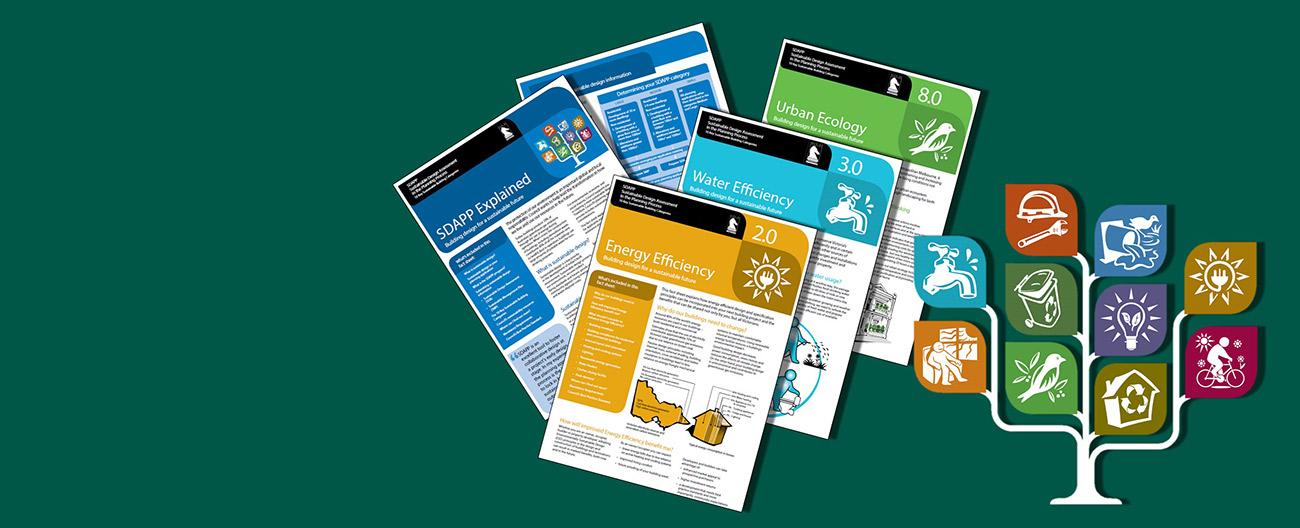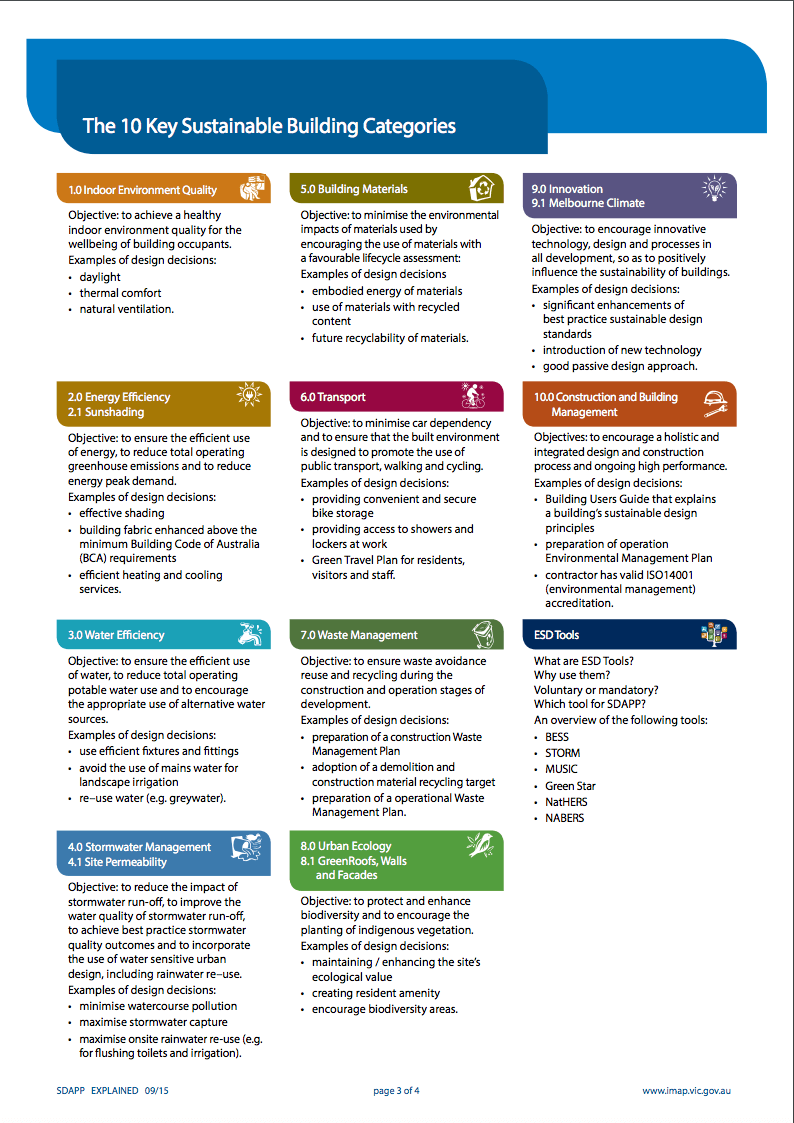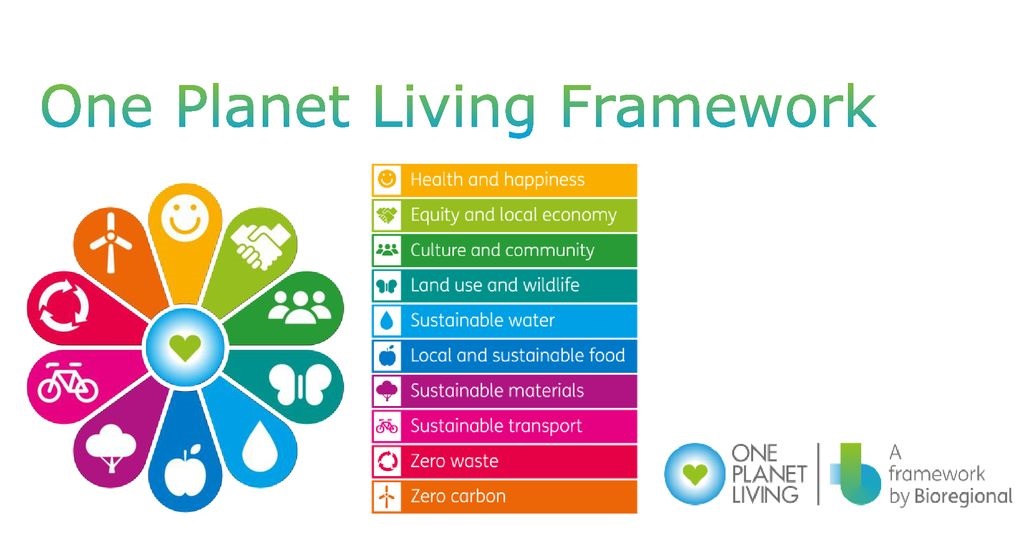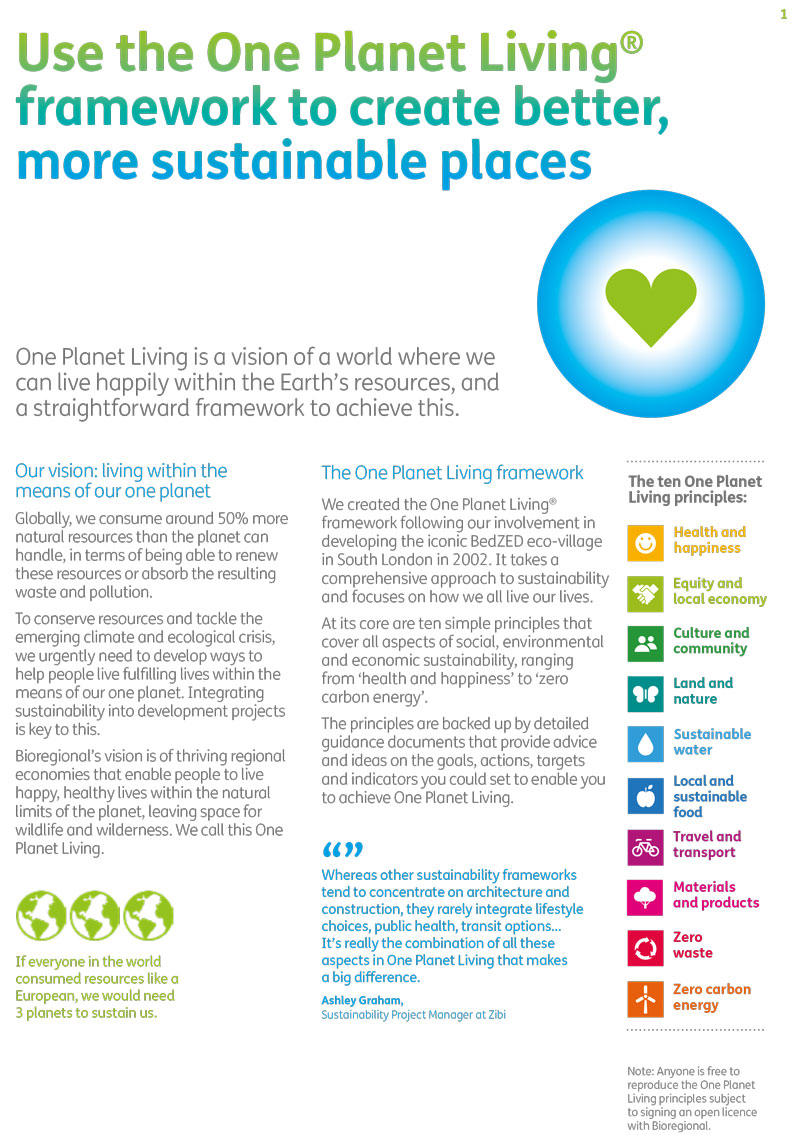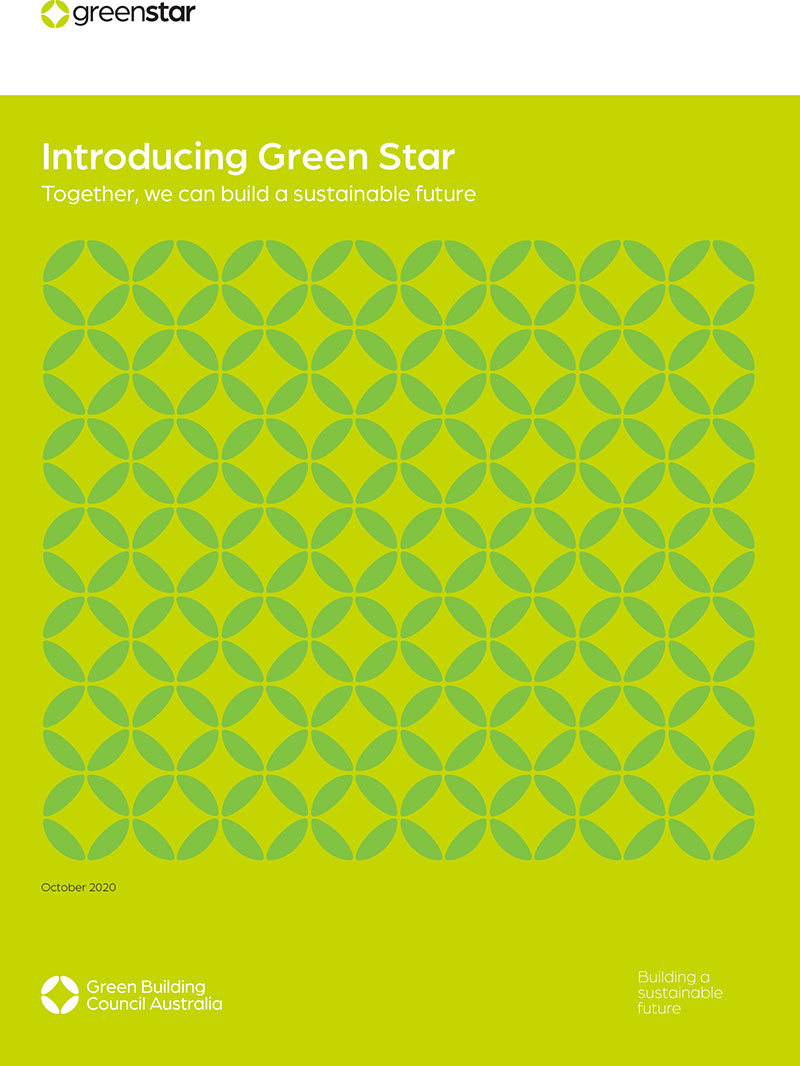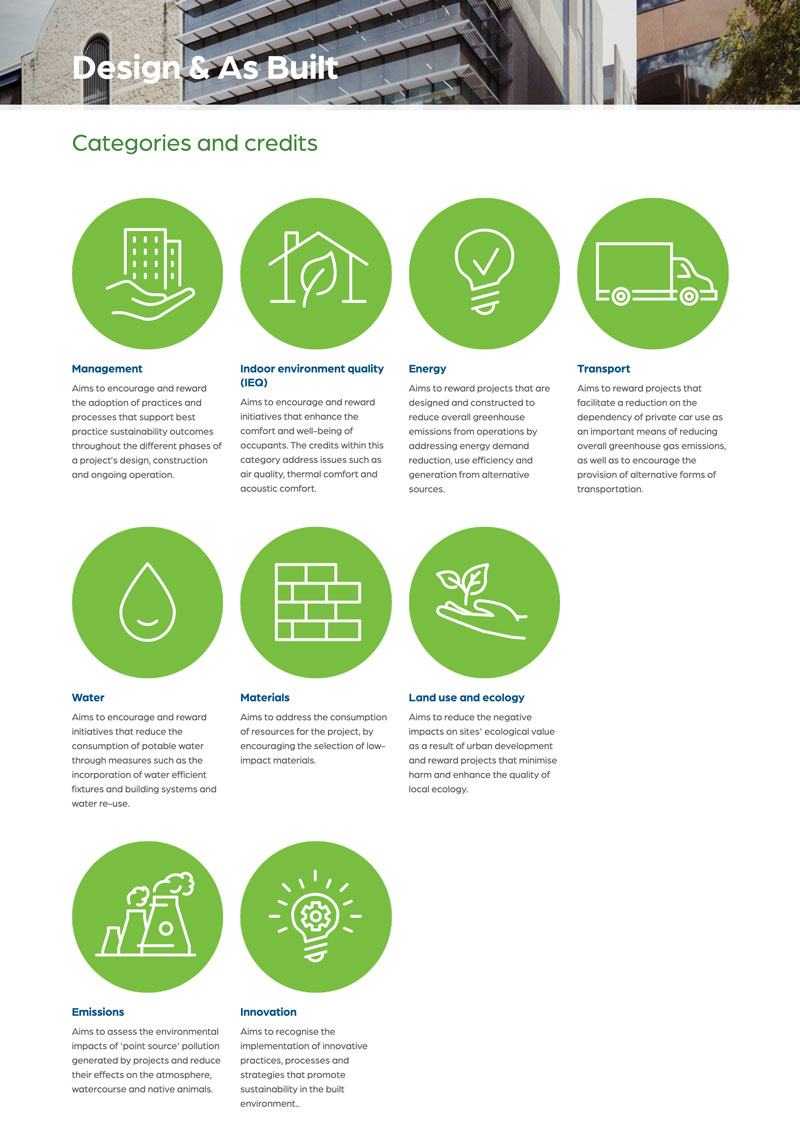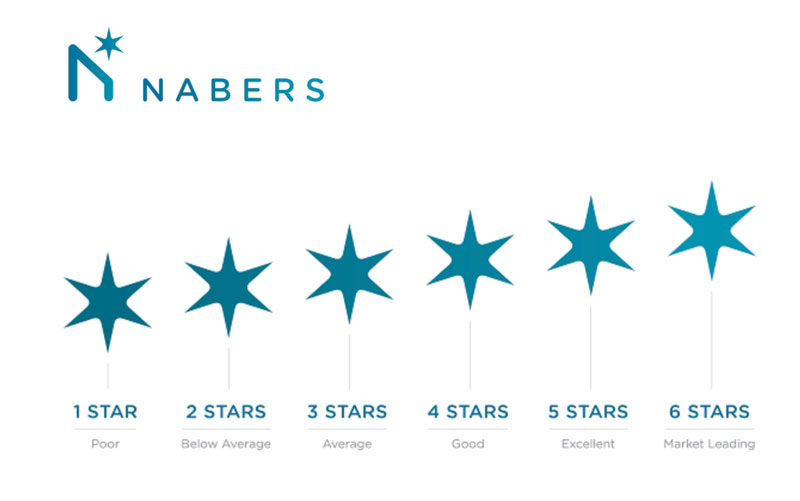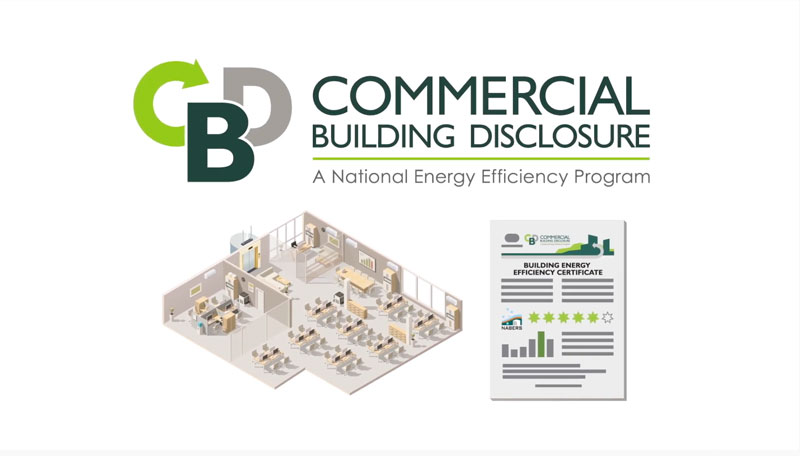The type of building to be assessed determines the potential tools available for assessing that building. We have reviewed the eight most common sustainability assessment tools as follows:
If you want more than the minimum its best to get a NatHERS assessment at the planning and design stage.
NatHERs takes into account hundreds of factors including building construction, local climate and orientation.
Due to the orientation of this house it is more comfortable to live in and requires less energy to heat and cool.
Residential energy ratings are the basic tool that sets a mandatory minimum benchmark for the efficiency of all class 1 and class 2 residential dwellings ie free standing homes or townhouses on their own land and apartments. The National Construction Code – Building Code of Australia (NCC-BCA) requires that these dwellings must meet the 6 star standard, which is an assessment of how energy efficient the design of the building fabric is. (The building fabric is the walls, roof/ceiling, floor, windows). The 6 star standard applies to class 1 and 2 dwellings Australia wide. The 6 star standard in Victoria also requires that class 1 dwellings also have a 2000L rainwater tank or renewable energy hot water service. There are currently no such requirements on apartments.
Potential dwelling rating scores range from 1 – 10 stars. A 1 star score is a very poor performing building, and a 10 star score indicates that the building would not require any energy to keep hot or cold in winter or summer ie this is as energy efficient as you could expect the building fabric to be and is similar in concept to the best practice renowned Passive house level of performance.
The current minimum 6 star standard is 6 out of 10 stars. This minimum is expected to be raised to 7 stars in the 2022 revised edition of the building code.
Note the building energy efficiency rating does not take into account how efficient the heating or cooling units are in the dwelling, how people use heating and cooling systems, the energy efficiency of any of the lighting, other appliances or plug loads such as TVs and computers. The energy rating only assesses the energy efficiency of the specified building fabric for that dwelling.
The rating assessment can be undertaken using any of the FirstRate5, Accurate or BERS rating tools.
A HERS rating or a Part 3.12 Building Code deemed to satisfy assessment is mandatory for all new class 1 & class 2 buildings and extensions and is only available to residential houses and multi unit developments. HERS ratings are undertaken on the design of these buildings. Commercial buildings of class 3-10 cannot be rated using any of the three tools, and cannot obtain a HERS rating. BCA Section J assessments are required for such buildings.
Compliance with Section J of the Building Code of Australia is mandatory for all buildings of classes 3-10. These assessments must be completed for commercial buildings to obtain a building permit. There is no star rating applied with these assessments, however a report is required to be completed to confirm compliance is achieved in relation to energy efficiency.
Section J is a minimum standard and does not require improvement above the minimum. It is not a mechanism that rewards higher performance.
Section J compliance is an energy efficiency framework that is applied at the design stage of a building. It currently does not incorporate any inspections or assessment of the actual demonstrated energy efficiency of the new non-residential development.
It is worth noting that the scope of the BCA to date has been to only focus on energy efficiency so other considerations such as stormwater management, water conservation, material selection, waste, transport, indoor environment quality, urban ecology, emission and innovation are not touched on by the Building Code regulations. Other tools such as the Sustainable Design Assessment in the Planning Process (SDAPP) program have been developed with an aim to address sustainability in these other areas, and addresses it to some degree in a range of other developments.
The SDAPP (Sustainable Design Assessment in the Planning Process) program is a Victorian council developed process to be applied to all buildings that require planning permits. Where applied it is mandatory to achieve satisfactory compliance. Approximately two thirds of Victorian Councils are now implementing the Sustainable Design Assessments.
The SDAPP process requires satisfactory completion of a Sustainable Design Assessment (SDA) or Sustainability Management Plan (SMP) report, which incorporate the BESS (Built Environment Sustainability Scorecard) report along with preview residential energy ratings or a preliminary Section J report, as well as a water sensitive urban design assessment using the STORM tool or similar.
The SDAPP process is designed to apply to a wide range of development types. The BESS tool can be used to assess the sustainability of:
- individual houses
- extensions to houses
- multi-dwelling townhouses
- multi-dwelling apartments
- non-residential developments – office, retail, industrial
- mixed use developments
The SDAPP program and BESS has not typically been used on masterplanned communities or larger subdivisions for the following reasons:
- It is designed to assess and improve the sustainability of buildings and does not consider many elements relevant to delivering sustainable infrastructure. It considers on-lot solutions but not larger street-wide or precinct considerations such as encouraging appropriate density, connected active transport routes, the design or walkable neighbourhoods or sustainable materials selection.
- Most housing estate dwellings are individual houses. In growth areas zones planning permits are not required for individual houses, hence there is not a mechanism or process of referring new dwellings to councils for the implementation of the SDAPP program or BESS tool.
- Sustainability in larger subdivisions is now considered in the new trial, council initiated, Sustainable Subdivisions framework.
SDAPP Fact sheets for each of the key sustainability areas identify mandatory requirements and Councils Best Practice standards.
Where Green Star aims to lift the bar of the top end of developments, SDAPP looks to raise the standard of all developments that require a planning permit. Accordingly compliance certification is less demanding than with Green Star, One Planet Living or the Living Futures Institute tools (eg the Living Building Challenge).
The One Planet Living tool is an alternative to Green Star and like Green Star is suitable for larger projects. It takes a similar amount of effort to manage this certification process as a Green Star certification process.
The One Planet Living tool is more goals focused. It is established but not as commonly undertaken as Green Star.
We believe this tool is more prestigious than achieving Green Star certification as it is more demanding in terms of carbon neutrality and zero waste, more flexible, better able to align with sustainability goals and targets, and delivers a more holistic result than the Green Star Design & As Built tool. The One Planet Living framework should keep the focus on the outcomes more than the certification documentation.
We also note that achieving a 5 or 6 star Green Star certification will not necessarily meet the requirements of carbon neutral goals or frameworks. Green Star certification can be achieved without being carbon neutral.
Ecological and/or carbon footprinting will be required to be measured with One Planet Living. In addition other social, financial and environmental indicators are required to be nominated by the project team and monitored and reported on to ensure continued compliance for a three year period.
One Planet Living (OPL) is a framework established by the world leading team the ZED factory in the UK.
One Planet Living has been adopted by the following cities, organisations, communities or developments:
- City of Fremantle, WA
- City of Greater Geelong, Vic
- City of Yarra, Vic
- The Commons, Vic – apartments
- Westwyck Ecovillage, Vic – apartments
- WGV at White Gum Valley, WA
- Evermore WGV, WA – apartments
- Liv Apartments, WA
- Marrick & Co. NSW – apartments
The One Planet Living framework addresses the following ten guiding principles for sustainability:
- Health and happiness
- Equity and local economy
- Culture and community
- Land and nature
- Sustainable water
- Local and sustainable food
- Travel and transport
- Materials and products
- Zero Waste
- Zero carbon energy
The One Planet Living (Communities and Destinations) framework would be proposed for major building developments.
https://www.oneplanetnetwork.org/webinar-discover-one-planet-living
Screenshot from One Planet Living for sustainable places guide
Green Star rating tools provides a 4 star, 5 star or 6 star rating. They currently go no higher than 6 stars.
A 4 star Green Star building represents a building in the top 25% of buildings nationally in terms of its sustainable design. A 5 star Green Star building represents a national best practice building. A 6 star Green Star building represents a worlds best practice green building.
Obtaining a Green Star rating is a voluntary accreditation although some governments require minimum Green Star ratings for their buildings, and the Property Council of Australia requires a new Premium Grade building to have a 5 star Green Star building.
The process of achieving a Green Star rating is usually integral with the design of a building, and requires a lot of design consideration, time and document substantiation. It is not an in-expensive process and would practically mainly only be considered for projects above $3-5M in value or where the client has a very strong commitment to achieving a very high standard of sustainable design in their building.
Four Green Star tools exist:
- Design & As Built,
- Green Star Communities,
- Green Star Interiors and
- Green Star Performance.
Green Star – Design & As Built is currently the most commonly used Green Star tool. The Green Star Design & As Built tool replaces a suite of older similar tools that were building type specific, and which are now being phased out ie GS Multi-Dwelling, Office, Education etc. The categories and credits are listed in the image to the left.
Green Star Communities V1.1 has the following credits:
EnviroDevelopment (ED) is an alternative sustainability tool to Green Star that includes many similar goals.
An established tool, it is substantially less expensive, faster and easier to implement than Green Star. The ED process is likely to take 3 months rather than 2 years as occurs with Green Star and accordingly is significantly less expensive.
The tool is more commonly used on masterplanned communities and subdivisions, although it is also suitable for other building types: Seniors Living, Multi-Unit residential, Mixed Use, Industrial, Retail, Education, Health and Aged Care, Other.
There are 6 elements to address In ED: Ecosystems, Community, Energy, Water, Waste, Materials.
Currently only 4 of the 6 elements are required to be completed to achieve the minimum 4 leaf rating.
The tool sets goals and requires statements to support how these have been met. It is not prescriptive, and is more flexible.
NABERS unlike the above two rating tools is a performance based rating system for completed / existing buildings that relies on 12 months of operational data before a rating can be determined.
NABERS assessments can be completed on the following building types: : offices (where their area is above 1000m2), hotels, shopping centres, data centres, and multi-unit apartment common areas. NABERS ratings range from 1 – Poor performer 2 – Below average performer 3 – Above average performer 4 – Strong performer 5 – Top performer 6 – Best practice.
Commercial building mandatory disclosure – under the national Commercial Building Disclosure program the owners of all commercial buildings over 1000m2 are required to undertake and disclose the results of a Building Energy Efficiency Certificate (BEEC) to prospective tenants or building buyers.
The BEEC involves 3 components: a NABERS base building energy efficiency rating, a tenancy lighting assessment, and behavioural energy efficiency guidance. A BEEC is valid for 12 months.
NABERS energy ratings which assess the infrastructure of the building, must not take into account Green Power.
For further information on the mandatory Commercial Building Disclosure program refer to www.cbd.gov.au

